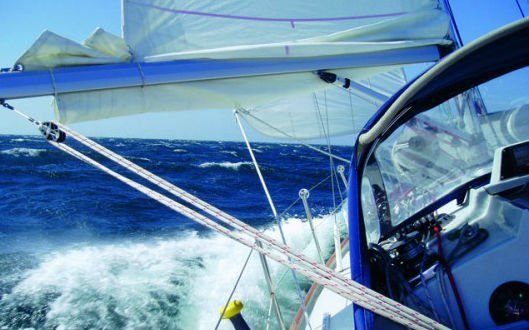
Weather Instruments for Small Boat Sailors
by Eva McQueen | May 16, 2018 | Instruments, Weather Stations
Reading time: 10 minutes
In this article, we’ll take a look at some useful gadgets & weather instruments for small boat sailors to measure the weather, as might be required for a sailboat.
At A Glance: Recommended Weather Instruments For Small Boat Sailors
You could easily spend a lot more on this equipment depending on your needs. However, for most people sailing for pleasure, these will do the job.
Last update on 2024-04-18
If you’re an experienced sailor, you’ll know that the weather is no joke. It’s something that you need to take seriously and be equipped with the right tools to weather any storms (literally) that come your way.
Professional seafarers have depended on various types of weather-related technology for centuries, but they’ve perhaps only become more prominent in the recreational market in the past few decades. Modern electronics have made various weather instruments for smaller boats that are reliable and compact enough to be mounted on a sailboat or sailing yacht.
Sailboat Weather Stations
As we get into these product recommendations, I should start by saying that although I know a thing or two about weather stations, I am not an expert sailor by any means. So, these are solid, highly recommended portable products researched as best as possible, but do take a minute to do your own research & read reviews on Amazon too.
Davis Instruments 6250 Vantage Vue
Let’s start with the top choice. If you’re not on a tight budget, I’d highly recommend picking up a Davis Vantage Vue. I’ll explain why as concisely as possible. This product:
- Is corrosion tested, to simulate wear & tear in extreme marine environments
- Has sealed electronics/sensors, protecting them from the elements
- Updates incredibly quickly (every 2.5 seconds)
- Is solar-powered with stored energy backup
- Has thousands of reviews worldwide
Overall, it seems like a safe choice. I should point out that a mounting pole isn’t included with this product usually.
Last update on 2024-04-18
If you’re looking for something for a slightly smaller budget, here are some alternative options.
Last update on 2024-04-18
Last update on 2024-04-18
Wind Vanes & Anemometers For Sailboats
The first step in avoiding the dangers of heavy weather is being aware of what is going on locally in the atmosphere. Accurate weather instruments allow the skipper to track weather conditions and quantify when and how fast they change.
Many crafts will have both a wind vane to read wind direction and an anemometer for wind speed. & other metrics.
BTMETER Digital Wind Speed Anemometer
For an anemometer, this handheld wireless option from BTMETER is our top choice. It covers the basics very well at an affordable price. Wind speed can be measured in your choice of unit, including knots. Highly accurate, connects to your phone via bluetooth, and solid power-saving features.
As well as the basics, full-featured portable wind meters like this one can include important data to display wind chill, which is critical for avoiding hypothermia.
Last update on 2024-04-18
Worth noting: you can check out this similar product, also by BTMETER, if you would also like to measure barometric pressure.
Last update on 2024-04-18
For a wind vane, the Windex 10 (or 15, depending on the boat size) is a popular choice.
It can be easily mounted on small boats.
The simplest way to determine wind direction is to face directly into the wind until you feel the same amount of wind on both cheeks, then if you can, identify a landmark directly in front of you. Use your compass to determine the bearing of the landmark, or take a compass reading of the wind direction. Most portable wind meters will not have a wind vane, but some of the more sophisticated models will include an internal compass which can be used in a similar fashion to the “wind on both cheeks” method.
Accurate temperature readings may not seem critical to a recreational sailor. If it gets chilly, personal comfort dictates putting on a jacket or foul weather gear. In actual practice, with the fun of being on the water and the excitement of new sensations, some crew members may ignore the need for donning weather protective clothing until it is too late. Given the wet and windy conditions of sailing, hypothermia, an uncontrolled drop in body temperature is a constant danger.
A sudden drop in air temperature may precede a sudden change in atmospheric conditions, signalling a quickly developing storm.
Thermometers are generally small and rugged enough to be mounted in a small cockpit, but if the instrument is mounted improperly the readings could be false due to direct sun.
Full-featured portable wind meters like the WeatherHawk SM-19 or the WM-350 will include sensors and software to display wind chill data, which is critical for avoiding hypothermia.
The barometer is considered the single most valuable weather prediction instrument carried on board. Current barometric readings will provide a picture of what the atmosphere is doing, but the change and rate of change in pressure readings are even more informative.
A quickly falling barometer indicates an imminent storm. A bulkhead mounted mechanical aneroid barometer requires no power, although a salty marine environment may negatively affect the internal gear mechanism. Handheld barometers are often too fragile to be practical. An electronic barometer such as the one featured in a handheld weather station is again the most favorable solution for the small boat sailor. Portable wind meters such as WeatherHawk WM-350 and SM-28 include the option for barometric readings.
Last update on 2024-04-18
A quickly falling barometer indicates an imminent storm. A bulkhead mounted mechanical aneroid barometer requires no power, although a salty marine environment may negatively affect the internal gear mechanism. Handheld barometers are often too fragile to be practical. An electronic barometer such as the one featured in a handheld weather station is again the most favorable solution for the small boat sailor. Portable wind meters such as WeatherHawk WM-350 and SM-28 include the option for barometric readings.
Load Up and Set Sail
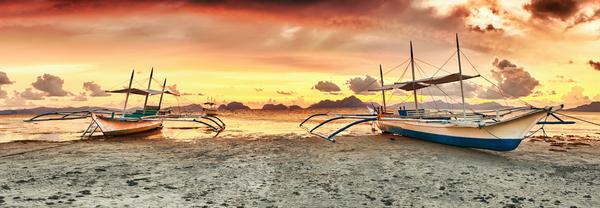
Life On The Water
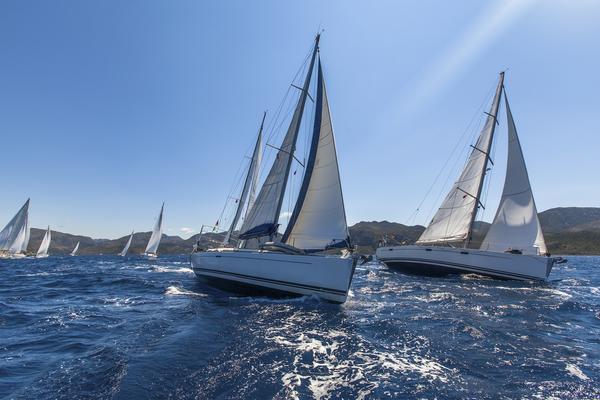
The basics of sailing, learning how to launch your boat, raise and lower the sails, and make it go where you want it to go can pretty much be learned over the space of a weekend, but you will spend the rest of your life perfecting those skills. There are sailing clubs just about everywhere you can find enough water to sail on, and most factory-built boats will have a class organization where you will find plenty of friends willing to teach you the basics of sailing.
It always feels great to have the faster boat while it can be humbling to wring all the performance you can out of your boat and still come up short, but racing, no matter how informal, is a great way to boost your boat handling skills. It is important for the skipper to share those skills with his crew, as well. With the limited space aboard a trailer sailor, it is good if everyone can pull their weight, and it is great fun to watch your kids learning how to handle the boat. Many skippers will tell you that the proudest moment of their sailing career was the first time they sat back with a drink while their kids took the helm and navigated across the bay.
With modern weather services both broadcast and over the Internet, a trailer sailor can usually choose the best conditions to go sailing in. If the skipper knows that it is going to be a stormy day, better to leave the boat on the trailer and take in a ball game. Keep in mind that broadcast or Internet forecasts are going to cover a wide area, and what the small boat sailor needs to know is the conditions where his boat is sailing right now.
A larger craft will have plenty of room for full-function weather instrumentation, but a trailer sailor usually will not have the dashboard space for all the weather gizmos that a skipper desires. While there is no replacement for the Mk1Mod0 Human Eyeball, there are a number of portable electronic devices that can fill the void.
Introducing the Trailer Sailor
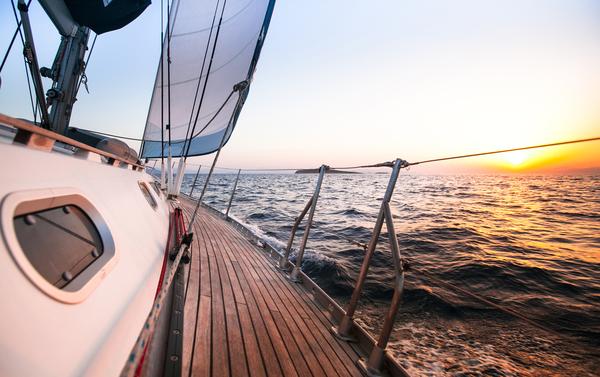
There is a saying in the boating world that the fun of boat ownership is inversely proportional to the size of the vessel. In other words, people who own small or very small boats tend to enjoy them a lot more than owners of big boats. A sailboat that is small enough to live on a trailer in your driveway represents an exceptional value.
The advantages of a small boat are almost too many to number. Maintaining a large boat is a lot of work. A small boat still needs maintenance, of course, but since it is a lot smaller, the work can be done in an hour or two instead of being a day-long or multi-day project. A big boat needs to be kept in the water, but a small boat skipper is likely to use his boat more often because it is so much simpler (and cheaper) for him to get it out on the water.
If a small sailboat does have an engine, it will be a very small and simple one that sips fuel. A larger yacht is often totally dependent upon firing up the “stinkpot” to get in and out of the harbor, not to mention relying on it to get home on schedule. It is easier to learn to operate a small boat than a large one (however, almost everything that you will learn on a small craft will be directly transferable to a larger vessel if you do decide to move up).
The most obvious advantage to a larger boat over a tiny one is safety and crew comfort, but even this can be an illusion. Nautical literature is filled with tales of very small vessels surviving very large storms (including hurricanes) if the crew is able to simply button-down and ride it out. It is rarely comfortable to ride out a storm in a small craft, but your boat will be a lot tougher than you suspect.
There are a few basic conditions that every skipper will need to keep track of. These will include wind speed and direction, air temperature, humidity, and barometric pressure. These conditions are recorded and reported by commercial and government agencies around the world, so a means of receiving these reports can be helpful to supplement local observation.
Limitations of Trailer Sailors?
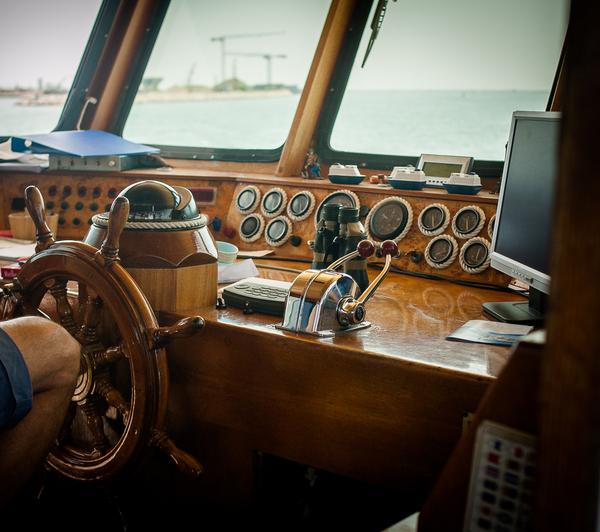
Some people refuse to consider a small boat because they are afraid it will be of limited use. Remember, the smaller the boat, the more fun it is to own! Some very tiny boats, including many which fit our definition of trailer sailors, have made incredible voyages, including several circumnavigations and exploring everywhere from the fjords of Greenland to the bays of Antarctica and everywhere in between.
A mooring kept yacht would seem to have a greater range, but in fact, the bigger boat is more or less trapped in a single body of water. Trailer sailors have the option of going “55 mph to windward” any time they want to on their trailer.
Even if your home waters are an inland reservoir, with a little planning and a well-timed vacation, your family could be cruising the Gulf Coast, the many islands of Puget Sound, the rocky headlands of New England, the sunny shores of the Sea of Cortez, the Great Lakes, or the Florida Keys.
As long as the water is deep enough for your keel and there is a road leading to it, you can sail your trailer sailor there!
The Life You Save May Be Your Own…
Although it is fun to dream and great to know that your boat would be up to an epic adventure, most of our trailer sailor adventures will be more limited in scope. Whether you are braving “the Roaring Forties” around Cape Horn or spending a lazy afternoon tacking back and forth across your local reservoir, things going wrong can be just as deadly for you and your crew. Small craft safety comes down to the same three elements:
- Maintaining your vessel and its equipment.
- Knowing how to operate it in a prudent manner.
- Be aware of the conditions you are sailing in by having instruments for small boats on board.
As we mentioned earlier, taking care of a trailer sailor is a much simpler proposition than living with a larger yacht. Since the boat lives in your driveway, you are able to take care of things yourself and at your own pace. Even if you are not very mechanically inclined there are plenty of tutorials and forums on the Internet where you can learn everything you need to know about taking care of your boat.
The trailer sailor is small enough that learning its systems is very simple. In fact, building a small sailboat yourself is not that hard. It is a time-consuming project, and over the span of the project, most builders find that they haven’t really saved any money over buying a factory-built boat.
However, by spending a few hours a week on the project, spaced over several months, the amateur builder finds that he has a better built and more beautiful craft (since he is working for himself, the amateur builder usually does not take shortcuts and can afford to use the best materials). If something goes wrong during the life of the boat, the builder knows that he will be able to fix it because he built it!
Probably the greatest small boat sailors of all time were the ancient Polynesians. Although their craft was not really what we would think of as trailer sailors, the boats did live on the beach when they were not being sailed.
These same boats (which were among the fastest non-engine powered watercraft of all time) were constructed by hand from all-natural materials with no written plans, fiberglass, epoxy, or metal fittings. The navigators who sailed them had no weather instrumentation other than their own eyes and knowledge passed down from father to son for generations. Using this stone-age technology, they became the dominant culture over nearly a fifth of the Earth’s surface.

We may never become as intimate with the sea and the weather as the ancient Polynesians, but we face the same dangers and experience the same joys every time we go to sea in our small boats. It is an attainable adventure that is within reach of almost everyone, and one that can be shared and enjoyed by the entire family. Keep the following principles in mind:
- Smaller vessels are incredibly capable, versatile, and much cheaper to own and operate than large yachts. The smaller the boat, the more fun it is to own!
- Although a trailer sailor may not have enough space to carry a suite of full-function weather instruments, the skipper can use handheld electronic devices to keep track of the weather and communicate with other vessels.
- There are several types of radio sets and receivers that can monitor NOAA Weather alerts and can be set up with an alarm for emergency conditions.
Tracking wind conditions is vital for sailing vessels for both the safety and performance of the craft. A simple portable wind meter gives the skipper up-to-the-moment readouts of wind speed and changing conditions. - Hypothermia can be deadly on the water. Keep track of air temperature and wind-chill conditions.
- Use a barometer to track and predict changes in local weather conditions.






